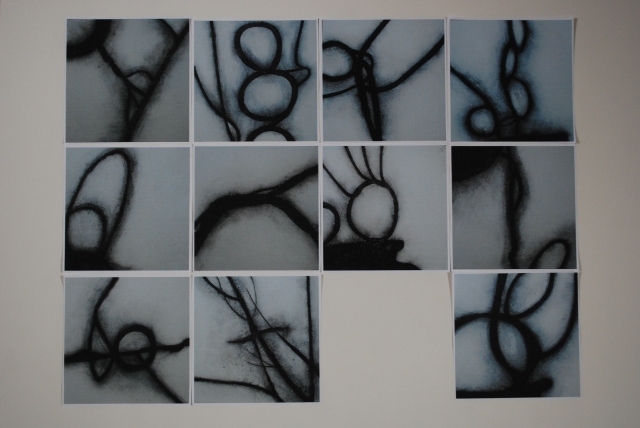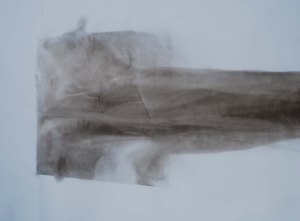Following the various adjustment I have made in response to my final tutorial I delivered my submission in person to Barnsley last week. I didn’t rush to write some final reflections, wondering how I might feel about having completed this important part of the course. As I look back I felt as though the words I wrote about how I came to the artist statement I have written sum up well the journey-
‘It is quite hard to describe fully how my practice has developed and to be described as I have done in my artist statement. In many ways it has been a long journey that began way back before I started this course. It has come about, too, at what can only be described as the darkest time in my life.
In the early part of the course where I was already working with willow as my focus, I also needed to be busy, active and engaged – leading to an intuitive and experiential approach- and this took me to working across media. At this time I just wanted to work without reflecting too much. I had many uncertainties through this time relating to the materials I had chosen, the nature of my work going backwards and forwards between 2D and 3D, which I have since considered to perhaps be related to the situation in my life. There were a number of artists that gave me the confidence to continue with embracing of willow in all its forms- Tania Kovats for her broad enquiry around water, Ursula von Rydingsvard for her focus on the Cedar tree and then Eva Hesse for her extensive exploration of her materials, in particular latex.
It was through a piece of work for my Contextual studies that I came to acknowledge that I had been making and doing things with willow for probably 15 years, so in some respects I had retreated to a space that was safe and familiar. It was through this ‘Conversation’ piece that I also reflected on how in some respects the willow had become a major ‘presence’ in my life, and in so doing was a kind of acknowledgement of the ‘absence’ I felt.
It is quite difficult to really chart how my practice has unfolded in brief, as it has happened in parallel with some very difficult times. I have done my best to record through my blog events as they have unfolded and how I have felt at the time.
Finding the work of John Newling has I think been key to how I have moved forward. The discovery of his ‘Lemon Tree’ project, and subsequent works that have included living materials, have led me to a new understanding of thinking about creative work.
Through my critical review, where I was looking at the work of Eva Hesse and John Newling and considering aspects of their work in relation to the impermanence of their chosen materials, I came to a greater understanding of a conceptual approach to work. I came to see that what I saw as Newling’s material, the Lemon Tree, was a tool to explore his actions- the ideas of care, nurturing and uncertainty. This I was able to relate to the work I had been making with the willow, and to make sense of it as a whole; the living willow sculptures and making charcoal part of the same continuum. I started to think about the idea of a model of practice- a parallel space that would encompass all aspects of the life of a willow that would take into account the natural flux’s of nature. From planting to making charcoal I started to think about the potential for a sustainable practice- growing ones own material with which to make work, and this took me to thinking about how the work I have been doing might also relate to the wider world-
- the need for sustainability
- an appreciation of diversity
- adaptability to change
- an appreciation of the benefits of collaboration
On a personal level my collaboration with willow is what has, in part, sustained me as I have had to adapt to change, through a practice diverse in approach.
As I have progressed through the course and have been able to reflect more, the connections between art and life have cropped up repeatedly. On reading about Allan Kaprow’s ‘action collages’ being a way of reconciling the work of Jackson Pollack and John Cage- the painterly and conceptual, the physical and theoretical- my mind turned to my contextual piece about Hesse and Newling, and I sensed that this is what I had been doing.
When I came to writing my statement, I thought a lot about Newlings work. I found myself feeling that there is a ‘poetic’ nature to his writing and that his words were very carefully chosen and placed strategically. It has also been through Newlings writings too that I have started to see the influence of the works of the philosopher, Heidegger- ideas about ‘dwelling’ and ‘being’, and discovering his book, ‘Poetry, language and thought’. This led me think more carefully about the words I chose and where I used them. The words ‘being with willow’ seemed to encompass everything I have done through out this course.
This time has been one of very mixed emotions, negotiating a path between certainty and uncertainty, and back again. Artistically I feel satisfied with the place I am at, but in many ways feel that I am not at the end, but just the beginning.’

















